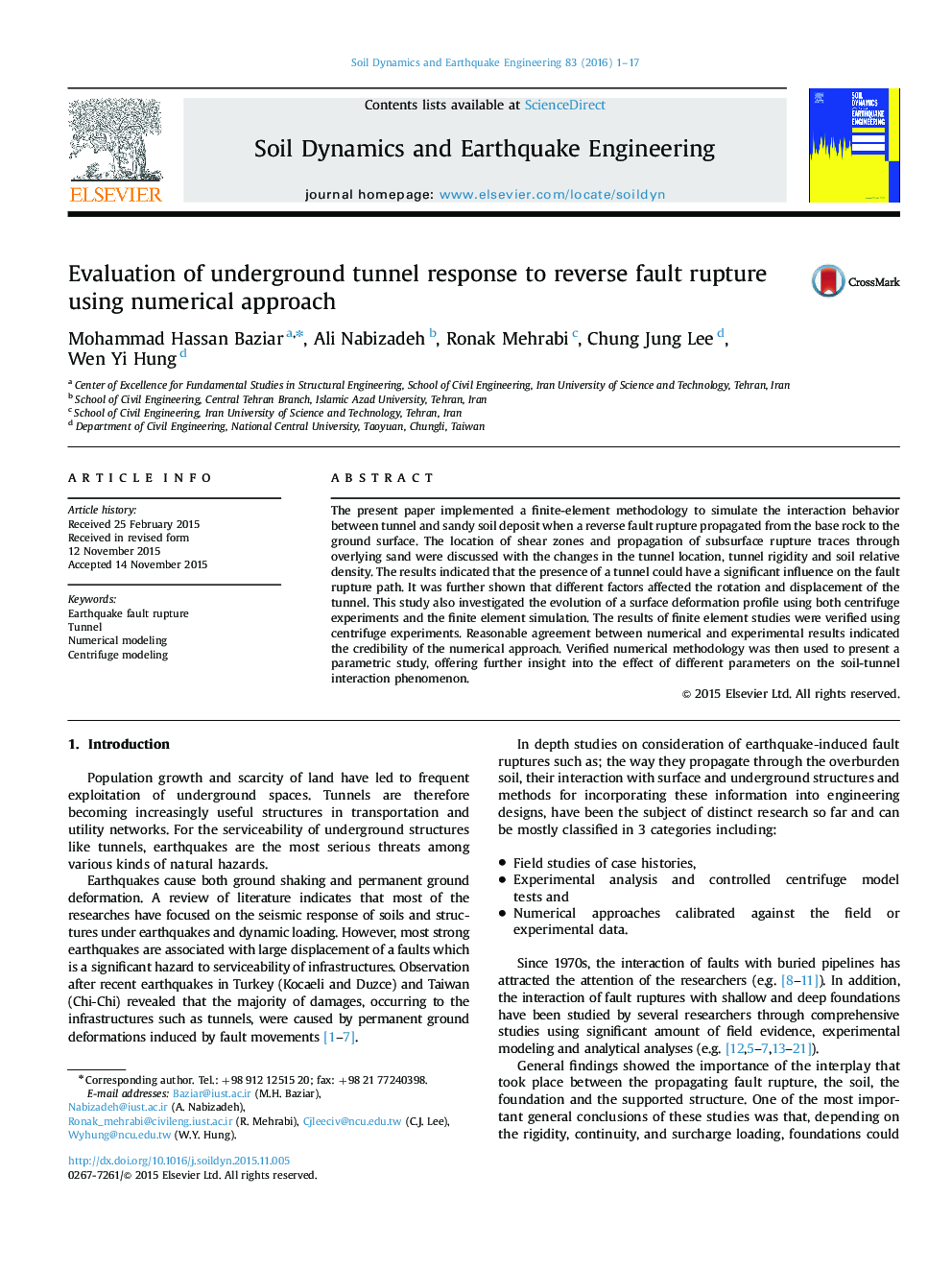| Article ID | Journal | Published Year | Pages | File Type |
|---|---|---|---|---|
| 6771466 | Soil Dynamics and Earthquake Engineering | 2016 | 17 Pages |
Abstract
The present paper implemented a finite-element methodology to simulate the interaction behavior between tunnel and sandy soil deposit when a reverse fault rupture propagated from the base rock to the ground surface. The location of shear zones and propagation of subsurface rupture traces through overlying sand were discussed with the changes in the tunnel location, tunnel rigidity and soil relative density. The results indicated that the presence of a tunnel could have a significant influence on the fault rupture path. It was further shown that different factors affected the rotation and displacement of the tunnel. This study also investigated the evolution of a surface deformation profile using both centrifuge experiments and the finite element simulation. The results of finite element studies were verified using centrifuge experiments. Reasonable agreement between numerical and experimental results indicated the credibility of the numerical approach. Verified numerical methodology was then used to present a parametric study, offering further insight into the effect of different parameters on the soil-tunnel interaction phenomenon.
Related Topics
Physical Sciences and Engineering
Earth and Planetary Sciences
Geotechnical Engineering and Engineering Geology
Authors
Mohammad Hassan Baziar, Ali Nabizadeh, Ronak Mehrabi, Chung Jung Lee, Wen Yi Hung,
